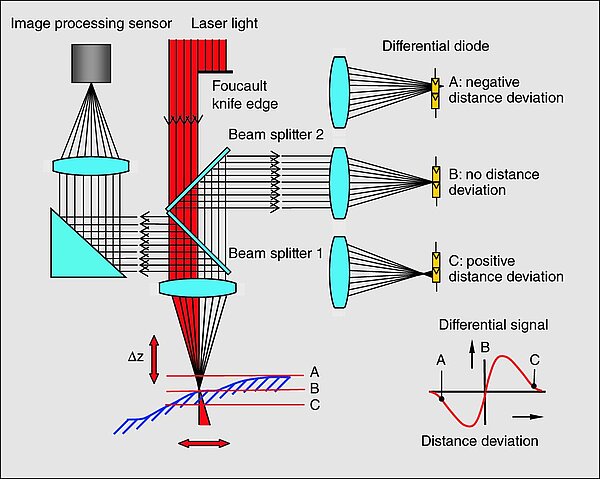An alternative principle for distance measurement is laser triangulation. The method is based on a laser light beam, usually generated by a laser diode, being projected onto the object to be measured at an angle to the optical axis of the sensor. The reflected light spot is imaged onto an optoelectronic sensor and the position of the point to be measured is deduced using a triangulation process.
- Development
-
Machines
- Coordinate measuring machines with X-Y table
- Coordinate measuring machines with guideways in a single plane
- Coordinate measuring machines with bridge
- Coordinate measuring machines with rotary axes
- Coordinate measuring machines for two-dimensional measurements
- Coordinate measuring machines with X-ray tomography
- Coordinate measuring machines for special applications
- Sensors
- Software
- Special characteristics
- Accuracy
- Publications
- Literature page



